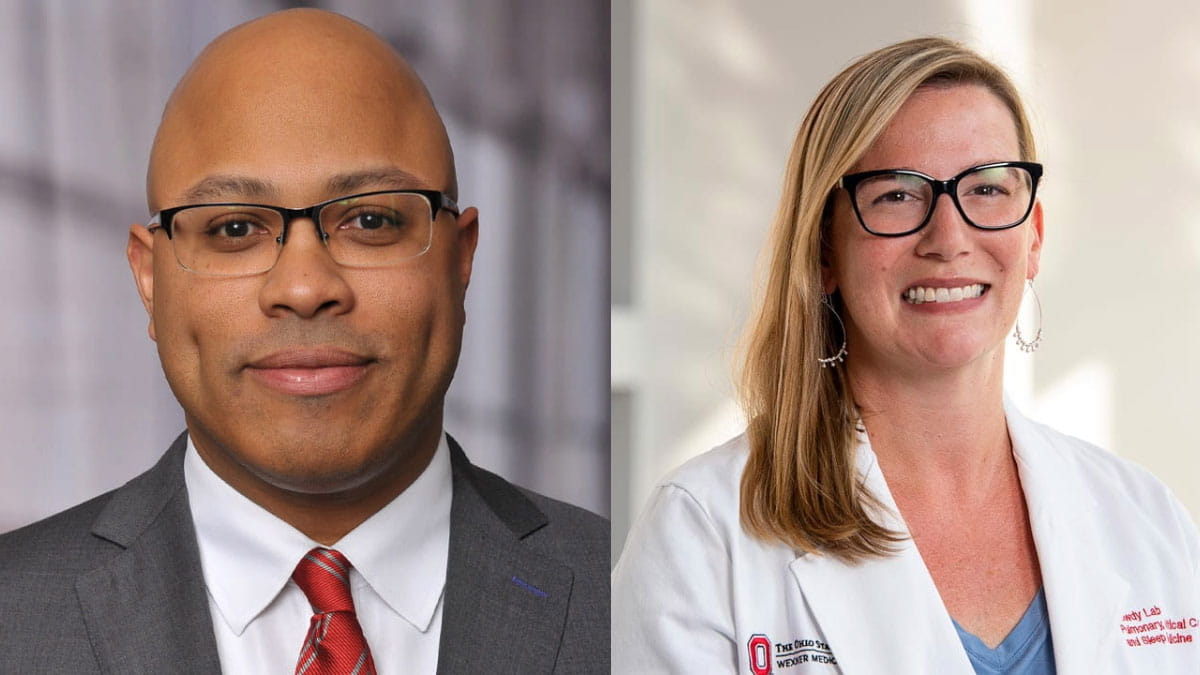A college physician-scientist and a researcher awarded Presidential Early Career Awards for Scientists and Engineers
 Sylvester Black, MD, PhD and Kymberly Gowdy, MS, PhD, were recently named recipients of the Presidential Early Career Awards for Scientists and Engineers. This is the highest honor bestowed by the United States government on outstanding, early-career scientists and engineers. Drs. Black and Gowdy, both nominated by the National Institutes of Health, join nearly 400 other federally funded scientists and engineers recognized this year for their innovative and far-reaching research developments in the field of science.
Sylvester Black, MD, PhD and Kymberly Gowdy, MS, PhD, were recently named recipients of the Presidential Early Career Awards for Scientists and Engineers. This is the highest honor bestowed by the United States government on outstanding, early-career scientists and engineers. Drs. Black and Gowdy, both nominated by the National Institutes of Health, join nearly 400 other federally funded scientists and engineers recognized this year for their innovative and far-reaching research developments in the field of science.
This year’s awardees are employed or funded by 14 participating agencies within the U.S. Departments of Agriculture, Commerce, Defense, Education, Energy, Health and Human Services, Interior, Transportation, and Veterans Affairs and the Environmental Protection Agency, the intelligence community, the National Aeronautics and Space Administration, the National Science Foundation, and the Smithsonian Institution.
As dean of The Ohio State University College of Medicine, Carol R. Bradford, MD, MS, FACS, is proud of our amazing faculty’s dedication to conducting groundbreaking research and revolutionizing treatments. She says Drs. Black and Gowdy’s innovative work ensures we remain on the forefront of medical innovation and will inspire greatness in generations of health care leaders to come.
“Dr. Black and Dr. Gowdy’s ability to apply their innovative research bridges the gaps between the lab bench and the patient’s bedside,” Dr. Bradford says. “This prestigious honor recognizes that when we support the work of early career physician-scientists and researchers, scientific advances and breakthroughs can happen — and lives will be improved.”
A new era of organ transplantation techniques
Dr. Black is a distinguished leader in abdominal transplantation and has pioneered methods to repair damaged organs for transplant, enhancing their viability and recipient outcomes. He serves as professor of Surgery at The Ohio State University College of Medicine, surgical director of the Liver Transplant Program at The Ohio State University Wexner Medical Center, and is co-director of the COPPER Laboratory dedicated to the development of extended ex-vivo donor organ perfusion.
Dr. Black and his team have developed first-in-class tissue repair drugs and therapeutics that demonstrate superior efficacy in reducing tissue injury during organ transplantation. This robust research builds on their work to increase the capabilities of organ perfusion machines and the ability to improve organ function before transplantation.
"This not only improves recipient outcomes but also reduces the number of organs that go unused," says Dr. Black. "Through transplantation surgery, you help one patient at a time. However, with advancements in science and laboratory developments, you have the potential to help thousands."
Moving environmental health research forward
Dr. Gowdy studies the cellular mechanisms at work when air pollution increases susceptibility and severity to lung diseases. She serves as associate professor of Internal Medicine in the Division of Pulmonary, Critical Care, and Sleep Medicine at the Ohio State College of Medicine and is the principal investigator of the Gowdy Environmental Lung Lab.
In our shared environments, air pollution comes from a variety of elements — wildfires, rising temperatures, chemicals, viruses and bacteria — which often lead to infections and cardiovascular issues. Dr. Gowdy says that a deeper understanding of how lipids and proteins are changed in the lung as a result of air pollution will help develop scientific approaches for interventions and treatments that improve patient outcomes. Her research program’s findings have also allowed them to expand their research to examine the impact nutrition plays on the body’s response to air pollution.
“As ambient concentrations of air pollutants, such as ozone, continue to rise, so will the incidence and exacerbation of chronic lung diseases,” Dr. Gowdy says. “We are making great efforts to clean up air outside, but indoor air quality is now gaining more attention, too.”
Collaborative efforts and future impact
Dr. Gowdy is extremely honored and humbled by the recognition this award gives to her ongoing work, which she began as a post-doctoral fellow at the National Institute of Environmental Health Sciences and which has developed into translating basic science and its function into action to reduce disease.
“The list of previous recipients speaks to the advancements in science, health, technology and leadership that have led to vast possibilities,” Dr. Gowdy says. “At Ohio State, we’re so fortunate to value collaboration to effect change.”
Dr. Black agrees, saying the academic institution is skilled in taking the combination of research and discovery in different scientific areas to create innovative solutions.
"I'm honored to collaborate with dedicated teams tackling some of the most pressing challenges," says Dr. Black. "Any success I've achieved is a direct result of working alongside an exceptional group of individuals."
